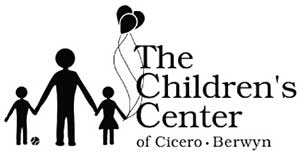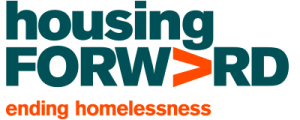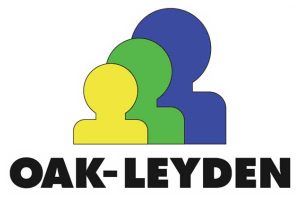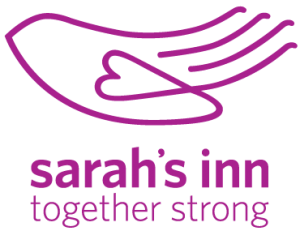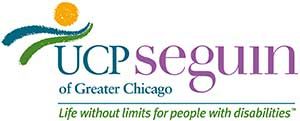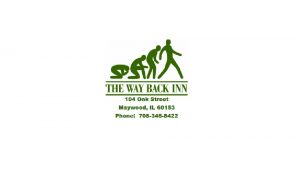Glossary
Agreement: As used in the context of care coordination, an agreement is an arrangement between the CCBHC and external entities with which care is coordinated. Such an agreement is evidenced by a contract, Memorandum of Agreement (MOA), or Memorandum of Understanding (MOU) with the other entity, or by a letter of support, letter of agreement, or letter of commitment from the other entity. The agreement describes the parties’ mutual expectations and responsibilities related to care coordination.
Behavioral health: Behavioral health is a general term “used to refer to both mental health and substance use” (SAMHSA-HRSA [2015]).
Care coordination: The Agency for Healthcare Research and Quality (2014) defines care coordination as “deliberately organizing consumer care activities and sharing information among all of the participants concerned with a consumer’s care to achieve safer and more effective care. This means the patient’s needs and preferences are known ahead of time and communicated at the right time to the right people, and that this information is used to provide safe, appropriate, 4 and effective care to the patient.” As used here, the term applies to activities by CCBHCs that have the purpose of coordinating and managing the care and services furnished to each consumer as required by PAMA (including both behavioral and physical health care), regardless of whether the care and services are provided directly by the CCBHC or through referral or other affiliation with care providers and facilities outside the CCBHC. Care coordination is regarded as an activity rather than a service.
Case management: Case management may be defined in many ways and can encompass services ranging from basic to intensive. The National Association of State Mental Health Program Directors (NASMHPD) defines case management as “a range of services provided to assist and support individuals in developing their skills to gain access to needed medical, behavioral health, housing, employment, social, educational and other services essential to meeting basic human services; linkages and training for patient served in the use of basic community resources; and monitoring of overall service delivery” (NASMHPD [2014]). See also the definition of “targeted case management.”
CCBHC or Clinic: CCBHC and Clinic are used interchangeably to refer to Certified Community Behavioral Health Clinics as certified by states in accordance with these criteria and with the requirements of PAMA. A CCBHC may offer services in different locations. For multi-site organizations, however, only clinics eligible pursuant to these criteria and PAMA may be certified as CCBHCs. CCBHC directly provides: When the term, “CCBHC directly provides” is used within these criteria it means employees or contract employees within the management structure and under the direct supervision of the CCBHC deliver the service.
Consumer: Within this document, the term “consumer” refers to clients, persons being treated for or in recovery from mental and/or substance use disorders, persons with lived experience, service recipients and patients, all used interchangeably to refer to persons of all ages (i.e., children, adolescents, transition aged youth, adults, and geriatric populations) for whom health care services, including behavioral health services, are provided by CCBHCs. Use of the term “patient” is restricted to areas where the statutory or other language is being quoted. Elsewhere, the word “consumer” is used.
Cultural and linguistic competence: Culturally and linguistically appropriate services are respectful of and responsive to the health beliefs, practices and needs of diverse consumers (Office of Minority Health [2014]). 5
Designated Collaborating Organization (DCO): A DCO is an entity that is not under the direct supervision of the CCBHC but is engaged in a formal relationship with the CCBHC and delivers services under the same requirements as the CCBHC. Payment for DCO services is included within the scope of the CCBHC PPS, and DCO encounters will be treated as CCBHC encounters for purposes of the PPS. The CCBHC maintains clinical responsibility for the services provided for CCBHC consumers by the DCO. To the extent that services are required that cannot be provided by either the CCBHC directly or by a DCO, referrals may be made to other providers or entities. The CCBHC retains responsibility for care coordination including services to which it refers consumers. Payment for those referred services is not through the PPS but is made through traditional mechanisms within Medicaid.
Developmental Disabilities: Developmental disabilities are a group of conditions due to an impairment in physical, learning, language, or behavior areas. These conditions begin during the developmental period, may impact day-to-day functioning, and usually last throughout a person’s lifetime.
Direct Support Professionals (DSPs): DSPs are people who work directly with people with physical, developmental, and/or intellectual disabilities with the aim of assisting the individual to become integrated into his/her community or the least restrictive environment.
Engagement: Engagement includes a set of activities connecting consumers with needed services. This involves the process of making sure consumers and families are informed about and initiate access with available services and, once services are offered or received, individuals and families make active decisions to continue receipt of the services provided. Activities such as outreach and education can serve the objective of engagement. Conditions such as accessibility, provider responsiveness, availability of culturally and linguistically competent care, and the provision of quality care, also promote consumer engagement.
Family: Families of both adult and child consumers are important components of treatment planning, treatment and recovery. Families come in different forms and, to the extent possible, the CCBHC should respect the individual consumer’s view of what constitutes their family. Families can be organized in a wide variety of configurations regardless of social or economic status. Families can include biological parents and their partners, adoptive parents and their partners, foster parents and their partners, grandparents and their partners, siblings and their partners, care givers, friends, and others as defined by the family.
Family-centered: The Health Resources and Services Administration defines family-centered care, sometimes referred to as “family-focused care,” as “an approach to the planning, delivery, and evaluation of health care whose cornerstone is active participation between families and professionals. Family-centered care recognizes families are the ultimate decision-makers for their children, with children gradually taking on more and more of this decision-making themselves. When care is family-centered, services not only meet the physical, emotional, developmental, and social needs of children, but also support the family’s relationship with the child’s health care providers and recognize the family’s 6 customs and values” (Health Resources and Services Administration [2004]). More recently, this concept was broadened to explicitly recognize family-centered services are both developmentally appropriate and youth guided (American Academy of Child & Adolescent Psychiatry [2009]). Family-centered care is family-driven and youth-driven.
Federally Qualified Health Center (FQHC): Federally funded nonprofit health centers or clinics that serve medically underserved areas and populations. Federally qualified health centers provide primary care services regardless of your ability to pay. Services are provided on a sliding scale fee based on your ability to pay.
Formal relationships: As used in the context of scope of services and the relationships between the CCBHC and DCOs, a formal relationship is evidenced by a contract, Memorandum of Agreement (MOA), Memorandum of Understanding (MOU), or such other formal arrangements describing the parties’ mutual expectations and establishing accountability for services to be provided and funding to be sought and utilized. This formal relationship does not extend to referrals for services outside either the CCBHC or DCO, which are not encompassed within the reimbursement provided by the PPS.
Intellectual Disability: Intellectual disability is a below-average cognitive ability with three (3) characteristics: intelligent quotient (or I.Q.) is between 70-75 or below, significant limitations in adaptive behaviors (the ability to adapt and carry on everyday life activities such as self-care, socializing, communicating, etc.), and the onset of the disability occurs before age 18.
Limited English Proficiency (LEP): LEP includes individuals who do not speak English as their primary language or who have a limited ability to read, write, speak, or understand English and who may be eligible to receive language assistance with respect to the particular service, benefit, or encounter.
Peer Support Services: Peer support services are services designed and delivered by individuals who have experienced a mental or substance use disorder and are in recovery. This also includes services designed and delivered by family members of those in recovery.
Peer Support Specialist: A peer provider (e.g., peer support specialist, recovery coach) is a person who uses their lived experience of recovery from mental or substance use disorders or as a family member of such a person, plus skills learned in formal training, to deliver services in behavioral health settings to promote recovery and resiliency. In states where Peer Support Services are covered through the state Medicaid Plans, the title of “certified peer specialist” often is used. SAMHSA recognizes states use different terminology for these providers.
Person-centered care: Person-centered care is aligned with the requirements of Section 2402(a) of the Patient Protection and Affordable Care Act, as implemented by the Department of Health & Human Services Guidance to HHS Agencies for Implementing Principles of Section 2403(a) of the Affordable Care Act: Standards for Person-Centered Planning and Self-Direction in Home and Community-Based Services Programs (Department of Health & Human Services [June 6, 2014]). That guidance defines “person-centered planning” as a process directed by the person with service needs which identifies recovery goals, 7 objectives and strategies. If the consumer wishes, this process may include a representative whom the person has freely chosen, or who is otherwise authorized to make personal or health decisions for the person. Person-centered planning also includes family members, legal guardians, friends, caregivers, and others whom the person wishes to include. Person-centered planning involves the consumer to the maximum extent possible. Person-centered planning also involves self- direction, which means the consumer has control over selecting and using services and supports, including control over the amount, duration, and scope of services and supports, as well as choice of providers (Department of Health & Human Services [June 6, 2014]).
Practitioner or Provider: Any individual (practitioner) or entity (provider) engaged in the delivery of health care services and who is legally authorized to do so by the state in which the individual or entity delivers the services (42 CFR § 400.203).
Recovery: Recovery is defined as “a process of change through which individuals improve their health and wellness, live a self-directed life, and strive to reach their full potential.” The 10 guiding principles of recovery are: hope; persondriven; many pathways; holistic; peer support; relational; culture; addresses trauma; strengths/responsibility; and respect. Recovery includes: Health (abstinence, ”making informed healthy choices that support physical and emotional wellbeing”); Home (safe, stable housing); Purpose (“meaningful daily activities … and the independence, income and resources to participate in society”); and Community (“relationships and social networks that provide support, friendship, love, and hope”) (Substance Abuse and Mental Health Services Administration [2012]).
Recovery-oriented care: Recovery-oriented care is oriented toward promoting and sustaining a person’s recovery from a behavioral health condition. Care providers identify and build upon each individual’s assets, strengths, and areas of health and competence to support the person in managing their condition while regaining a meaningful, constructive sense of membership in the broader community (Substance Abuse and Mental Health Services Administration [2015]).
Shared Decision-Making (SDM): SDM is an approach to care through which providers and consumers of health care come together as collaborators in determining the course of care. Key characteristics include having the health care provider, consumer, and sometimes family members and friends acting together, including taking steps in sharing a treatment decision, sharing 8 information about treatment options, and arriving at consensus regarding preferred treatment options (Schauer, Everett, delVecchio, & Anderson [2007]).
Substance Use Disorders: Substance use disorders occur when the recurrent use of alcohol and/drugs causes clinically and functionally significant impairment, such as health problems, disability, and failure to meet major responsibilities at work, school, or home.
Targeted case management: Targeted case management is case management, as defined above, directed at specific groups, which may vary by state. CMS defines targeted case management as case management furnished without regard to requirements of statewide provision of service or comparability that typically apply for Medicaid reimbursement. 42 CFR § 440.169(b). Examples of groups that might be targeted for case management are children with serious emotional disturbance, adults with serious mental and/or substance use disorders, pregnant women who meet risk criteria, individuals with HIV, and such other groups as a state might identify as in need of targeted case management. See also the definition of “case management.”
Trauma-informed: A trauma-informed approach to care “realizes the widespread impact of trauma and understands potential paths for recovery; recognizes the signs and symptoms of trauma in clients, families, staff, and others involved in the system; and responds by fully integrating knowledge about trauma into policies, procedures, and practices, and seeks to actively resist retraumatization.” The six key principles of a trauma-informed approach include: safety; trustworthiness and transparency; peer support; collaboration and mutuality; empowerment, voice and choice; and cultural, historical and gender issues (Substance Abuse and Mental Health Services Administration [2014]).


